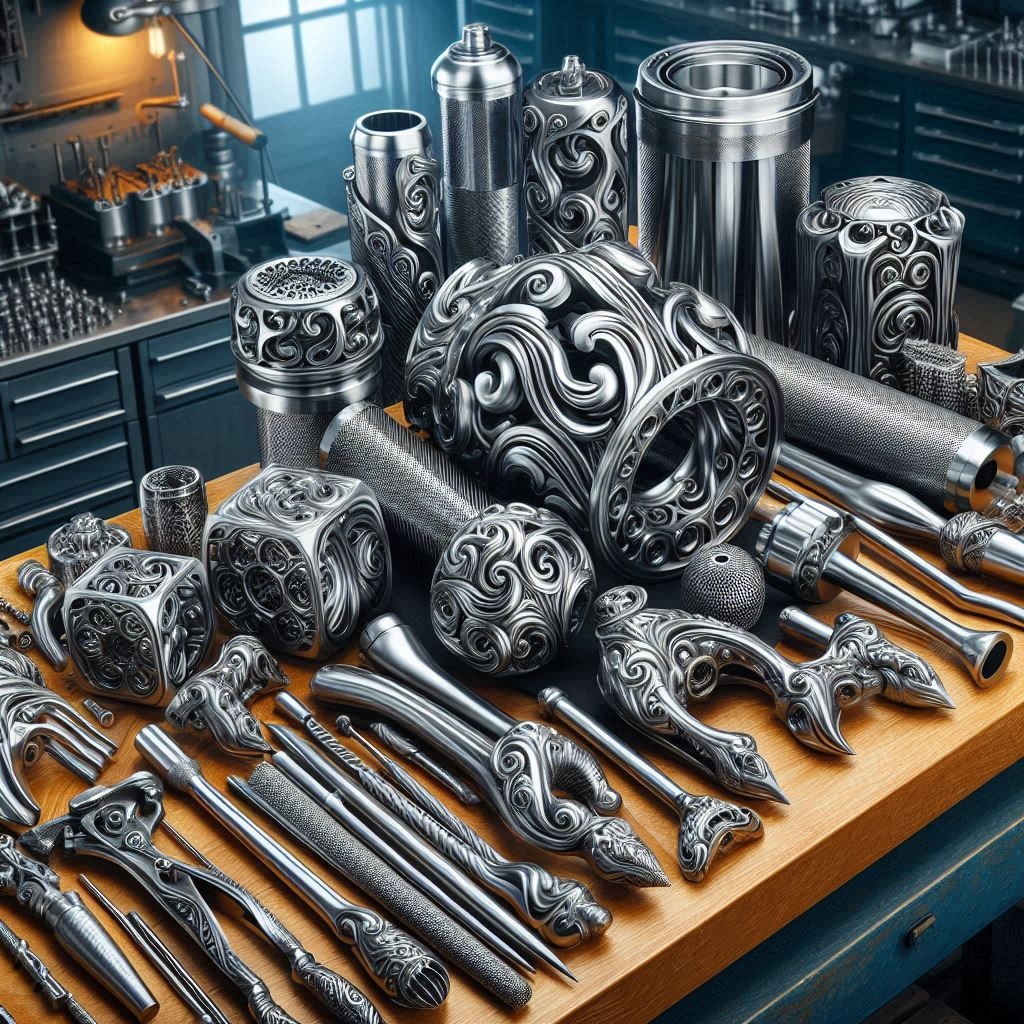SS Forging Parts – Precision and Reliability for Industry

Forged stainless steel (SS) components are integral to
modern industrial production because of their strength, durability, and
resistance to corrosion. Forged SS components are produced via a forging route,
which is a process that shapes stainless steel material with high compressive
forces, mostly at elevated temperatures, which will reshape the internal grain
structure in order to improve the mechanical properties of SS components.
The durability and longevity of forged SS components provides the necessary longevity required for demanding applications of heavy machinery, automotive applications, oil & gas pipelines, and aerospace assemblies.
What Are SS Forging Parts?
SS forged parts are precise and high-quality components made from stainless steel alloys. Stainless steel has a high strength to weight ratio, corrosion resistant properties, and sustainable influence, which makes for an excellent material for applications where reliability is critical through high temperature and pressure. Forging carties the actions of heating and forming, or compressing the metal as special hammers, or other presses only refine the grain structure of the metal, enable elimination of defects associated with metal production, increase mechanical attributes of the material. Accordingly, the products manufactured from SS forged parts will have greater strength and structural integrity than non-forged products, that are highly engineered, for their specific embodied, application. There are numerous forged parts used in many industries including common products like, flanges and pipe fittings, shafts and gears, valves and couplings, fasteners and connectors, and performance based components for custom machines.
Advantages of SS Forging Parts
SS forging parts have various important advantages leading to their popularity across a wide range of industries. Stainless steel forged parts exhibit superior mechanical properties compared to cast or machined parts. This has increased tensile strength, impact resistance, and fatigue life. In addition, they are also highly resistant to oxidation and corrosion. All these qualities make it an excellent engineering choice in extreme environments including chemical, marine, and oil and gas environments. Improved durability results from the highly refined grain structure, which in combination with no internal defects, creates an engineered part that lasts longer under extreme conditions.
Newer forging technologies will also provide increased precision and hold dimensions, making it easier to service and make parts of highly integrated and complex machines/systems. While the initial assumptions of having an up-front investment will hold true for forged SS parts, a cost effective approach will arise due to their longer life expectancy, lower maintenance cost, and usability in extreme conditions.
Applications Across Key Industries
Forging stainless steel components is used in numerous
industries for their strength, ductility, and resistance to corrosion. Good
examples of stainless steel components forged for the oil and gas industry are
high-pressure valves, flanges, and fittings used in pipelines and refinery
systems.
The automotive industry also utilizes forged SS for the safe
manufacture of various parts, including engine components, transmission shafts,
and suspension components that require strength and reliability.
In the aerospace industry forged stainless steel is similarly
not inconsequential; it is regularly used to fabricate landing gear, turbine components,
and other supporting structure that requires correct dimensions and high performance.
Similarly, marine fabrication often involves the fabrication of products such
as prop shafts, couplings, and deck machinery that would need to function in a marine
application. Power generation includes forging components like turbine rotors,
generator shafts, and boiler components that are critical for performance and
longevity.
Types of Stainless Steel Used in Forging
When it comes to the forging process, the right grade of stainless steel will additionally be an important decision relative to its end use. Strength, corrosion resistance, and temperature all play a role in the identifying the grade of stainless steel for forging. There are many different grades of stainless steel to fulfill numerous industrial needs. Examples of austenitic stainless steels are 304 and 316 which possess better corrosion resistance and are suitable for usage in chemical processing as well as marine environments.
410 and 420 are martensitic grades that provide good strength and high hardness capacity making them well-suited for wear-resistant applications. 430 stainless steel is a ferritic grade that has limited corrosion resistance with improved machinability compared to other stainless steel grades. Duplex 2205 exhibits good corrosion resistance, good strength, and is suitable for high-performance applications where demand is great.
Conclusion
Forged stainless steel (SS) components are staples in modern
engineering and offer remarkable strength, tolerances, and reliability across an
endless amount of industries. The combination of the remarkable mechanical properties
of forgings with the corrosion resistance and durability of stainless steels makes
for the perfect choice in components operating in extreme conditions.
As industry progresses in advancing technology, the need for
engineered components forged from stainless steel will be reinforced with increased
reliability, efficiency, and advances to the science of design and engineering in
acute applications.




